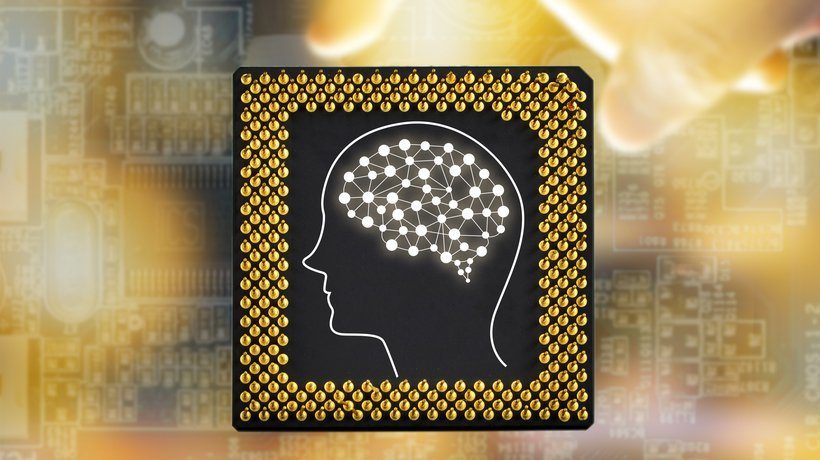The Role Of Machine Learning And Artificial Intelligence In The Future Of eLearning
It’s an exciting time in the world of eLearning. Technology is constantly evolving and adapting to boost everyday efficiency and make our lives easier. Modern tools give us the power to connect from around the globe and bridge gaps as soon as they appear. One such advancement is the rise of Machine Learning and Artificial Intelligence. Namely, their role in the future of eLearning. Predictions, algorithms, and analytics come together to create more personalized eLearning experiences. But how exactly will Machine Learning and Artificial intelligence (AI) transform the eLearning landscape in years to come? And how can you start preparing for monumental changes today?
What Is Machine Learning And Artificial Intelligence (AI)?
Before we dive into the forecast of Machine Learning and Artificial Intelligence (AI) in eLearning, let’s cover the basics of these tech-based approaches. First things first: Machine Learning is a sub-division of Artificial Intelligence. It involves algorithms that predict possible outcomes based on user data. The system identifies certain patterns and trends, then learns from the data in order to provide greater personalization. Every piece of new information that the program receives makes it more intuitive. The entire process takes place autonomously, from extracting and evaluating the data sets from the Learning Management System to predicting what online learners need based on their past performance.
Today, there are two different types of Machine Learning frameworks: proprietary and open source. Both fall into the category of deep learning software. There are also various tools or hardware involved, ranging from tensor processing units developed by Google to vision processors that enable machine vision operations. In addition, you can already find a vast assortment of Machine Learning libraries, complete with algorithms that support specific programming languages.
Machine Learning Classifications
Machine Learning includes algorithms that allow the system to predict future outcomes and detected patterns based on specific user data. Here are the 3 common algorithm classifications that are used in Machine Learning:
1. Supervised
The system uses past examples and new data sets to predict the outcomes. In this instance, the programmer must provide the system with inputs and outputs in order to train the software. Over time, the system can automatically construct outputs or targets for new data sets.
2. Unsupervised
Does not involve any labels or data classifications. The system evaluates data in order to identify patterns and make inferences or predictions. It’s not a matter of mapping the input to an output, but detecting more obscure trends or insights in the data set. There is also a sub-set category known as “semi-supervised”, which combines unlabeled data and human-based training. For example, the programmer provides the system with labeled online resources in order to map out certain inputs and outputs with greater accuracy.
3. Reinforcement
This Machine Learning category includes a specific task or goal that the system must complete. Throughout the process, it receives feedback in order to learn the desired behaviors. For example, the system encounters an error while performing the action or a reward for achieving the most favorable outcome. Thus, the program is able to learn the most effective approach via “reinforcement signals”.
The Benefits Of Machine Learning And Artificial Intelligence (AI) In eLearning
There are a variety of benefits that Machine Learning and Artificial Intelligence (AI) can offer online learners of the future, as well as organizations who invest in modern LMS platforms that feature intuitive algorithms and automated delivery of eLearning content. Here are just a few of the most notable advantages:
1. More Personalized eLearning Content
Machine Learning algorithms predict outcomes, which allows you to provide specific eLearning content based on past performance and individual learning goals. For example, an online learner’s history reveals that they prefer tactile eLearning activities. Thus, the system automatically adjusts their eLearning course map to include more serious games and eLearning simulations that are kinesthetic by nature. Likewise, online learners who exhibit a particular skill gap will receive targeted recommendations that build related talents and abilities. Thus, they are able to gradually gather the building blocks that the skill set requires. The system also delivers the eLearning content in a more personalized format. For instance, it may skip several eLearning modules for more advanced online learners or take a more comprehensive, linear approach for those who still lack basic knowledge.
2. Better Resource Allocation
There are actually two benefits relating to resource allocation. The first is that online learners receive the exact online resources they require to fill gaps and achieve their learning goals. In the corporate sector, this equates to less seat time and training payroll hours. Employees get the information they need more rapidly, as every online training resource is custom-tailored to their personal objectives. The second benefit is better resource allocation for your L&D team. They can spend less time analyzing graphs and LMS metrics, and more time developing powerful eLearning content. The system takes care of the Big Data and allows your L&D team to spend their time and energy elsewhere.
3. Automate The Scheduling And Content Delivery Process
Many Machine Learning tasks involve behind the scenes work that are tedious and time-consuming, but crucial nonetheless. For example, scheduling coursework for online learners or delivering online resources based on their eLearning assessment results or simulation performance. Artificial Intelligence (AI) may be able to take over these operations in the near future, making it possible to automatically generate unique eLearning course maps for every online learner who enrolls in your eLearning course. They can also readjust their eLearning course immediately whenever the need arises.
4. Improve eLearning ROI
Less online training time and greater personalization translates into a broader profit margin. You spend less on online training without sacrificing the desired outcomes thanks to predictive analytics and AI-equipped software that can track and forecast every move on an online learner. This also gives you the power to deploy your online training resources where and when they’re required. For example, more effective data gleaned from Machine Learning algorithms reveals hidden online training gaps. In response, you can funnel online training resources to address the inefficiencies and omit other areas of the online training program that are no longer relevant, instead of devoting online training resources to maintaining assets that aren’t resonating with online learners or supporting current objectives.
5. Improve Learner Motivation
Online learners receive an individualized experience instead of a generic eLearning course that touches on irrelevant topics. Therefore, they don’t have to dedicate as much time to the online training process, but still accomplish their goals and build vital skills. This gives them the added motivation they need to engage with the eLearning content and reach their potential. They are also able to go at their own pace and participate in eLearning activities that resonate with them. The Machine Learning systems of the future can be likened to a private virtual tutor, offering them the coursework they need just when they need it.
6. Create More Effective Online Training Programs
These benefits result in more effective online training programs that take all factors into consideration, instead of only acting on one piece of criteria. For example, online assessment results or survey findings. The Machine Learning system offers a comprehensive overview of Big Data and uses it to predict the outcome. Therefore, you can intervene before it’s too late and offer every corporate learner new personalized online training opportunities. You can even use AI to make peer-to-peer interactions more productive. For instance, match mentors to online learners who can benefit from their specific skills or past experiences.
How Machine Learning And Artificial Intelligence Are Transforming The eLearning Landscape
What if you could create eLearning content and then let the system take care of the more tedious tasks, such as reviewing charts and statistics to detect hidden patterns? What if you could provide immediate personalized eLearning feedback and steer online learners in the right direction without any human intervention? Machine Learning and Artificial Intelligence have the potential to automate the behind-the-scenes work that requires a significant amount of time and resources. In the future, AI can help you develop and deploy more meaningful eLearning experiences that bridge undisclosed gaps.
The system will be able to predict every eventuality and desired outcome in a matter of seconds. Then deliver eLearning content that caters to online learners’ individual needs, preferences, goals, and areas for improvement. It takes intuitive eLearning design to a whole new level, as the system knows what an online learner requires even before they do. As such, you have the power to custom-tailor every aspect of the eLearning program based on an online learner’s past performance, job description, and learning preferences.
4 Tips To Prepare For The Machine Learning Revolution
A complete Terminator-esque AI takeover is still a ways off. However, you can start preparing for Machine Learning integration today with these simple tips:
1. Research Available Tech Tools
A good place to start is to researching current LMS platforms and eLearning tech tools to get a sense of modern Machine Learning integrations. For example, some eLearning software already has algorithms and automation features built in. You can also evaluate the LMS your organization is using to gauge its tech limitations. Then look for add-ons or third-party software that can help you optimize its efficiency. Consider attending trade shows or conferences to get the latest scoop on Machine Learning tools and applications.
2. Collect Current Big Data
You don’t want to wait to collect data until Machine Learning and Artificial Intelligence becomes a full-fledged reality. In fact, you should already be collecting Big Data from all available sources, even if you aren’t currently using it in your online training strategy. There’s no way to tell which data will be useful when it’s time to incorporate algorithms and predictive analytics. Machine Learning systems require the complete picture, not just a snapshot of the last few days or weeks. Compile and organize data from your LMS, website, and social media pages, in addition to survey results and on-the-job observations. Store it safely for later use after you’ve identified the patterns and trends that are relevant for today’s online training content.
3. Be Realistic About Machine Learning’s Role In Your Online Training Strategy
It’s important to bear in mind that Machine Learning isn’t going to be the ultimate solution. Though it will probably be a powerful tool to maximize the power of Big Data, some degree of human interaction will still be required. At least until the robots fully takeover and we’re all able to ride off into the sunset in our flying cars. You should be realistic about how much will actually be automated by the system and the role that AI will play in your online training strategy. Identify your objectives and evaluate the current tasks your employees perform in order to maintain the system and evaluate data sets. Then figure out which operations can be managed by Machine Learning algorithms in the future.
4. Develop A Game Plan To Get A Head Start
It’s nearly impossible to create an exact timeline for when you’ll fully incorporate Machine Learning into your online training strategy. However, you can develop a rough game plan to stay one step ahead. For example, create an outline of the desired outcomes in order to identify Machine Learning applications in your organization, such as how it will help you reduce employee turnover or manage HR operations more effectively. You might also consider taking some courses in programming or Machine Learning algorithms, or reach out to experts in the field who can offer their assistance when the time comes.
Machine Learning and Artificial Intelligence are sure to play a prominent role in the future of eLearning. Especially given the numerous benefits they can bring to individual online learners and organizations. The secret is to stay one step ahead of the tech trends and evaluate your current eLearning strategy to forecast AI applications. How can Machine Learning help you deliver learner-centered eLearning content and streamline the data analysis process? What can you do to make way for the rise of Machine Learning and benefit from Big Data now?
There’s still some time before Machine Learning and Artificial Intelligence take over the analytics process entirely. Read the article 5 Types Of Big Data To Extract From Your LMS And How To Use It to discover the types of Big Data you can extract from your LMS today, and how to put it to good use to improve your eLearning course design.








